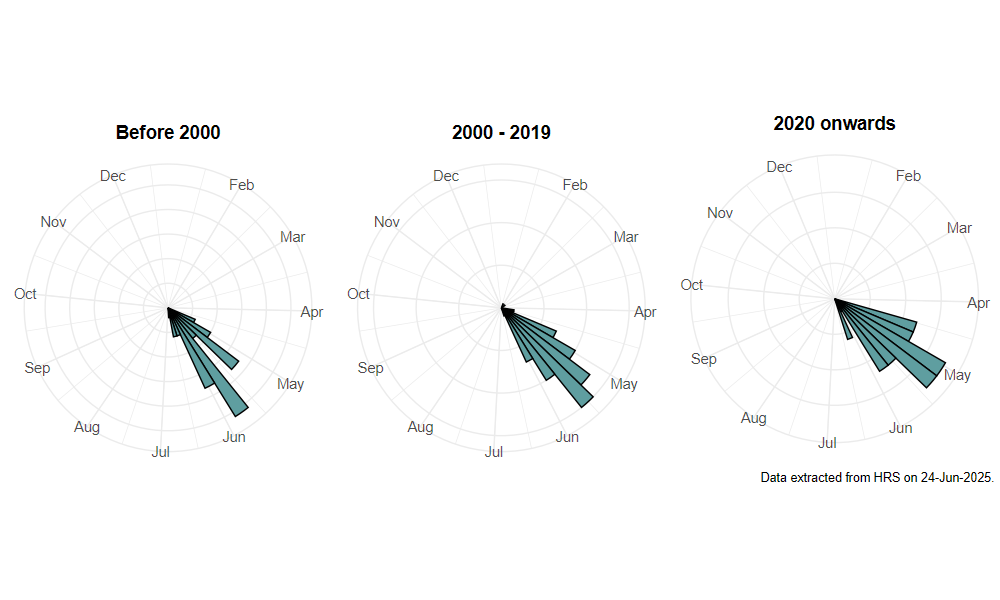Brachyopa bicolor (Fallén, 1817)
Identification
Identification difficulty = 4. ![]()
![]() according to Ball & Morris, 20241
according to Ball & Morris, 20241
Synonymy
This was the only member of its genus recognised as British prior to a revision by Collin(1939)2. The additional species were not covered by a widely available key until Coe(1953)3. Consequently, older records could refer to any Brachyopa species, unless a specimen still exists and can be checked.
Biology
The larva feeds on microbes (yeasts and bacteria) in sap runs. Historically there has been a belief that its main association was with sap runs on Goat Moth Cossus cossus infested trees but this is not necessarily the case. Adults are normally found in close association with sap runs, especially on Oak Quercus and Beech Fagus sylvatica although the sap run may not be immediately obvious. They have also been found in association with sap runs on Birch Betula and Horse Chestnut Aesculus hippocastaneum, and with Lime Tilia sp. (with no apparent sap run).
Flight period
The following plots show the number of unique records per week excluding those reported to be of immature stages.

Status
Lower Risk (Nationally scarce) - Ball & Morris, 20144. Rare (RDB3) - Falk, 19915. Vulnerable (RDB2) - Shirt, 19876.
Distribution
This is a lowland species. It was formerly centred on the New Forest and Windsor Great Park but since 2000, records from the East Anglia, Devon and the Welsh borders suggest that it is rapidly expanding its distribution through the both the East and West Midlands.

Trends
The following plots show the Frescalo TFactor vs year and a map of the rescaled frequency (all records) for the species.
-
Ball, S., & Morris, R. (2024). Hoverflies of Britain and Ireland. WILDGuides (3rd ed.). Oxford: Princeton University Press. ↩
-
Collin, J. (1939). Notes on Syrphidae (Diptera). III. Entomologist’s monthly Magazine, 75, 104–109. ↩
-
Coe, R. (1953). Diptera: Syrphidae. Handbooks for the Identification of British Insects, 10(1), 1–98. ↩
-
Ball, S., & Morris, R. (2014). A review of the scarce and threatened flies of Great Britain. Part 6: Syrphidae. ( No. 9). Species status (pp. 1–130). Peterborough: JNCC. ↩
-
Falk, S. (1991). A review of the scarce and threatened flies of Great Britain. ( No. 39). Research and Survey in Nature Conservation (pp. 1–194). Peterborough: NCC. ↩
-
Shirt, D. (Ed.). (1987). Red Data Books: 2. Insects. Peterborough: NCC. ↩